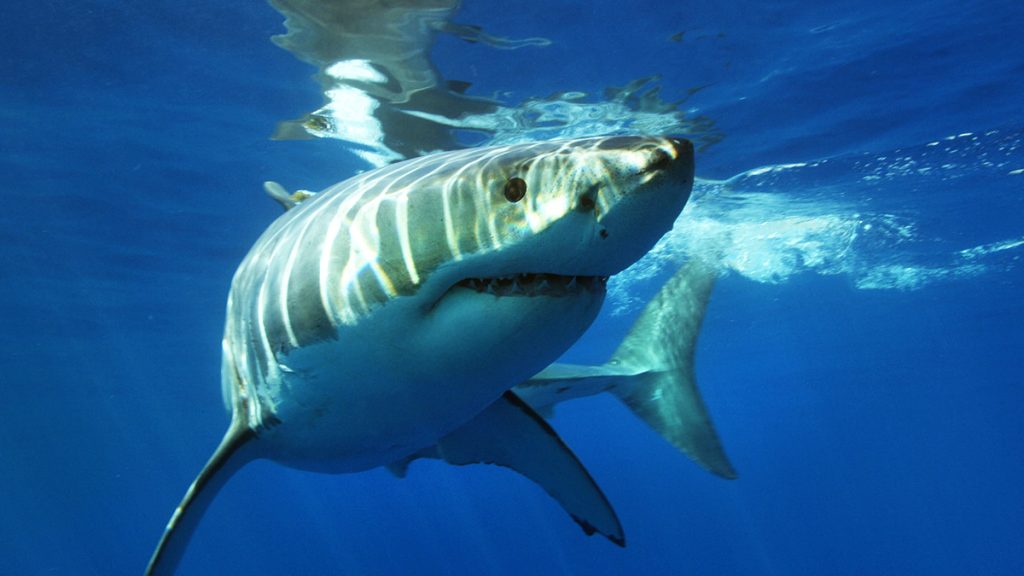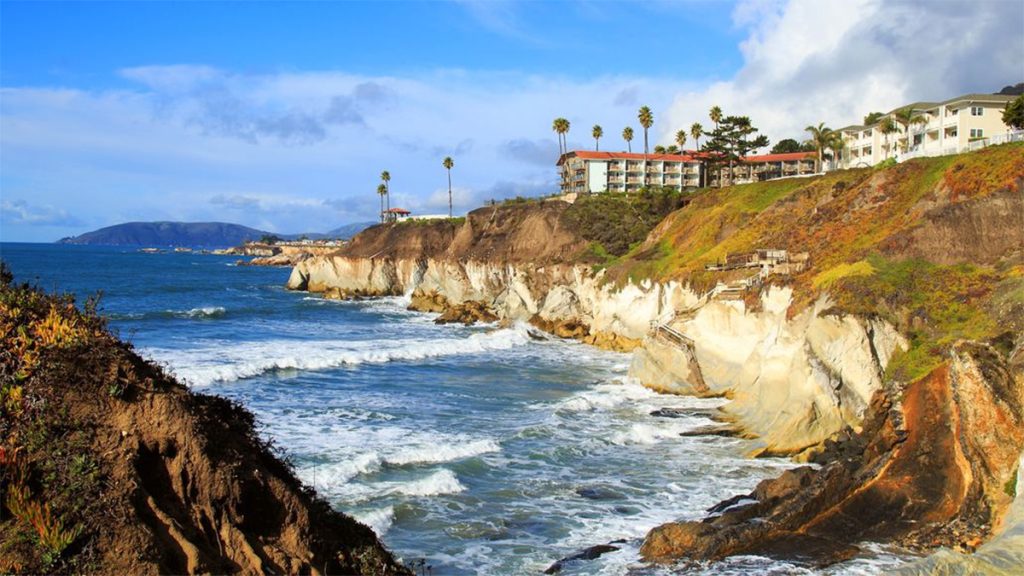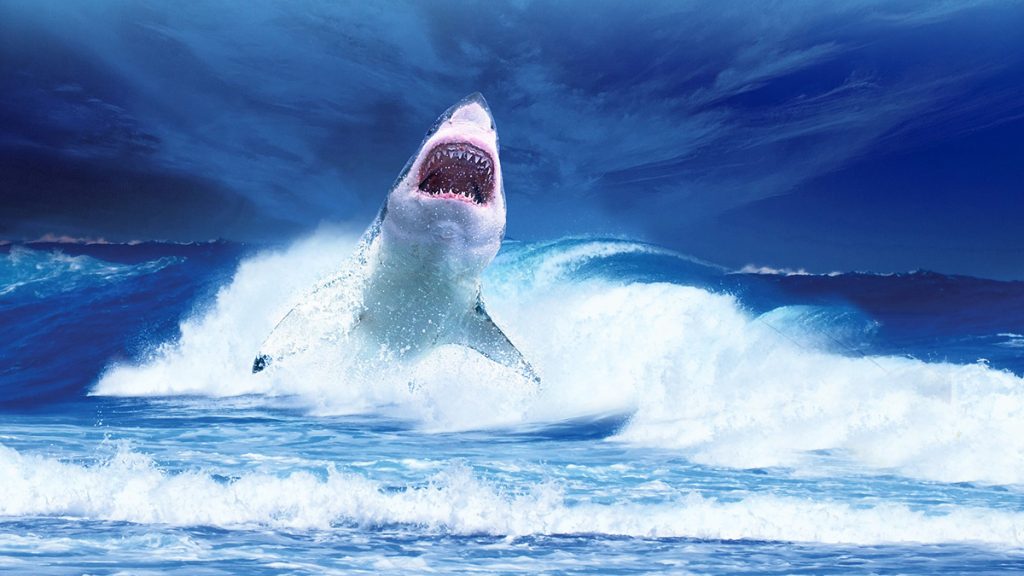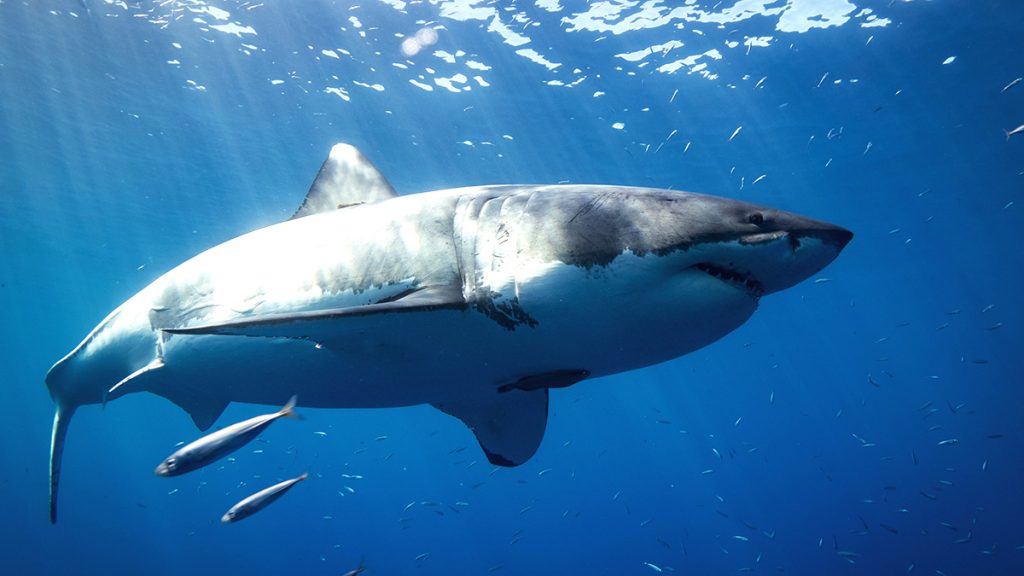Visitor’s Guide To Great White Sharks in California

The great white shark is undoubtedly one of the most majestic — and misunderstood — sea creatures. And California just happens to be one of the best places in the world to see one.
Great whites are just one of many types of sharks in California coastal waters, but they’re generally one of the most awe-inspiring. That’s probably because it ranks as the world’s largest predatory fish. It could also be because it’s basically a living fossil that has thrived for more than 11 million years.
If you’re curious about when, how, and if you’ll see one of these magnificent creatures while visiting the Golden State, here’s everything you need to know about great white sharks in California.
Table of Contents
Everything You Need to Know About Great White Sharks in California
As mentioned earlier, great white sharks are far from the only type of shark that lives off the coast of California. However, it’s likely the shark that has done the most to capture the imagination of locals and visitors alike.
Here’s what you should know about the great white shark in California.

Why Are There So Many Great White Sharks in California?

Great white sharks aren’t exclusive to California waters — they are found in coastal areas across the world. They generally thrive in temperate seas and oceans, and their range includes both the continental shelf and open waters.
However, California does have a booming population of great white sharks for a few reasons. For one, the waters off the West Coast of the United States are among the most biologically productive worldwide, supporting a range of biodiversity.
Human actions are also responsible for the growing population of great white sharks in California. Perhaps more accurately, the lack of human activity has allowed sharks in California to thrive.
In 1972, the U.S. government granted federal protections to California sea lions and Pacific harbor seals — two important shark food sources that were over-hunted by humans.
A little over two decades later, in 1994, great white sharks themselves became protected. Additionally, officials also banned the use of gill nets, which were known to be destructive to sea animal populations.
Since then, the population of great white sharks in California has boomed, particularly along the state’s Central Coast.
Time of Year to Visit California for Great White Shark Sightings
Between the varied ecosystems, generally mild weather, and attractions galore, there’s no bad time to visit California. However, there is a “best time” to go if you plan on seeing great whites or the other sharks of the California coast.
There are a number of factors that influence when the best great white shark sightings will be in California. For example, ocean water temperatures will dictate when great white sharks migrate to California’s coast from the waters further south.
When do great white sharks migrate to California? Generally, the best time to see a great white shark in California is between late September and mid-November. You can push that to December in some areas.
Best Way to See Great White Sharks in San Diego
Hands down, scuba diving is the best way to encounter great whites in San Diego. We tap Odyssea Diving in San Diego as your ultimate partner for outstanding tours and superior training. They provide scuba rentals, lessons for dive certifications, and much more. Additionally Odyssea knows all the top hot spots to find great white sharks. They have shark diving tours along with other exciting excursions such as diving off Catalina Island, and exploring Wreck Alley – all of which you have very high chances of getting up close and personal with these magnificent giants of the sea.

Best California Beaches to Find Great White Sharks

While the Central Coast has the largest population of great white sharks, the animal is still found further south. Great whites are just one of the many types of Southern California sharks, in other words.
There have been California shark sightings up and down the coast, from San Diego to San Francisco. As long as you’re going during “shark season in California,” there’s a good chance that you’ll be able to see a great white shark (or at least another type of shark).
Even if you don’t plan on meeting a great white, there’s still a chance that you’ll see one. While they prefer deeper waters, sharks can come as close as 100 feet from the coast.
Laws Protecting Great White Sharks in California
To intrepid fisher-people, a great white shark might seem like the ultimate catch. However, if you’re asking, “can you fish for great white sharks?” the answer is no.
Great white sharks have been protected under California regulations since 1994. It’s illegal to pursue, catch, hunt, capture, or kill great white sharks throughout the state.
Additionally, great white sharks are also federally protected. Under government rules, any great white shark that has been accidentally caught must be released immediately.
As covered earlier, the protections on great white sharks in California are one of the reasons why they’re thriving. Without those protections, great whites could become a victim of overfishing and go extinct.
Shark Attacks in California

It’s hard to talk about great white sharks without discussing the possibility of shark attacks. However, rest assured that great white shark attacks — and shark attacks in general — are incredibly rare in California.
So, how many shark attacks are there per year in California? Less than you’d expect. There’s an average of 1.8 attacks per year in California. That’s less than the number of lightning strikes that cause fatalities per year.
Since records have been kept, there have only been 99 unprovoked attacks by sharks. Nine of those resulted in fatalities. In other words, you probably won’t get attacked by a shark — and it’s even less likely that a shark will kill you.
If you do end up face-to-face with a shark, it’s important that you don’t splash or make any sudden movements. Very slowly swim back to shore while keeping the shark in sight.
Great White Sharks are One of the Many Wonders of California

California isn’t the only place where you can see great white sharks, but with everything else the state has to offer, it’s probably one of the best.
Because of the booming great white shark population in California, there’s an excellent chance that you’ll be able to spot one during your next boat tour, whale watching adventure, or cage dive.
And always keep in mind that the great white is unjustifiably vilified. The great white shark should inspire awe and respect from people, but not fear.






